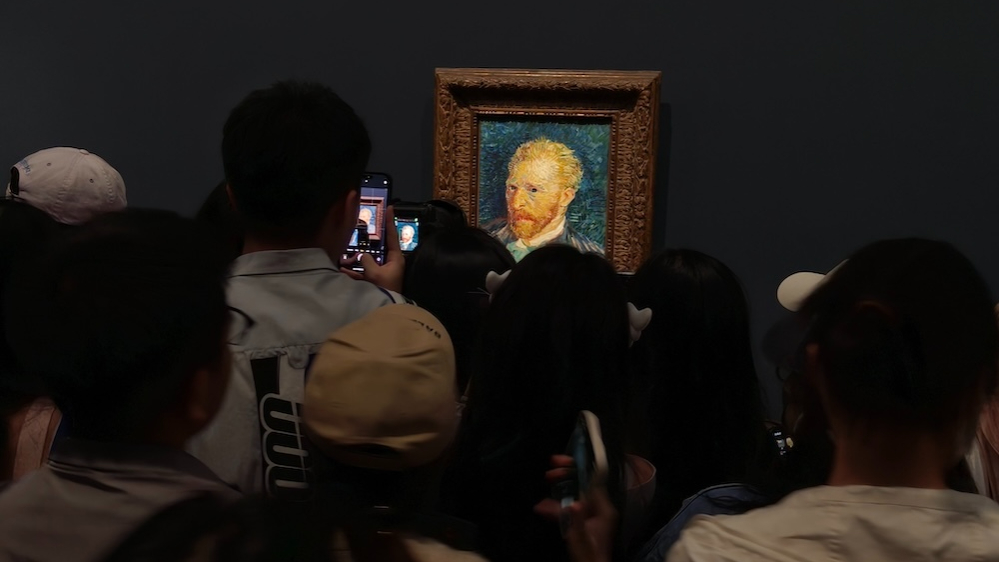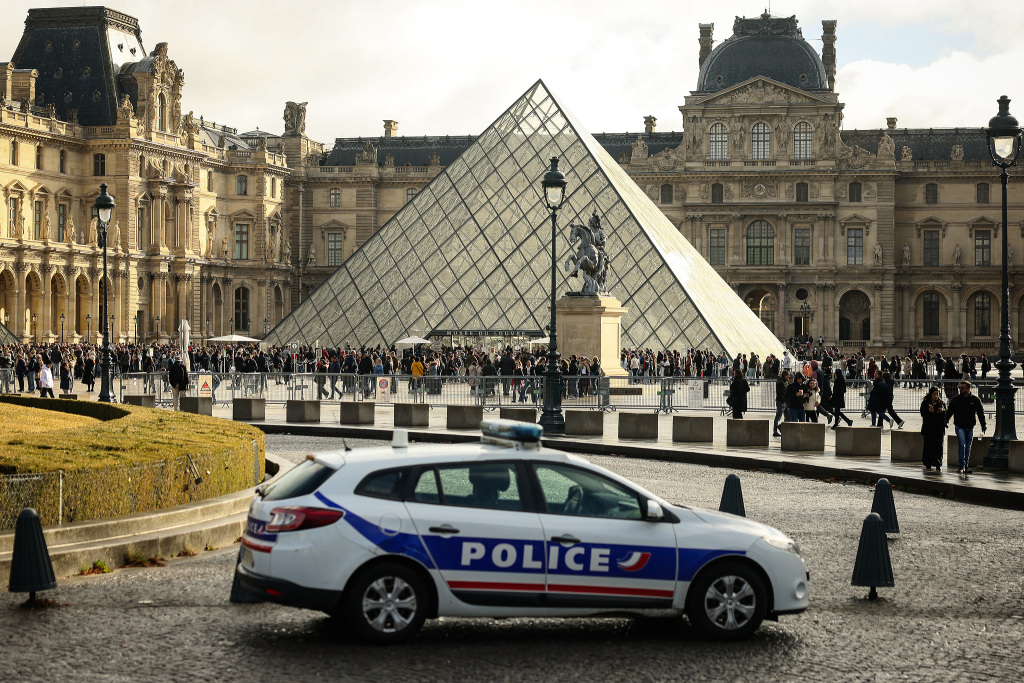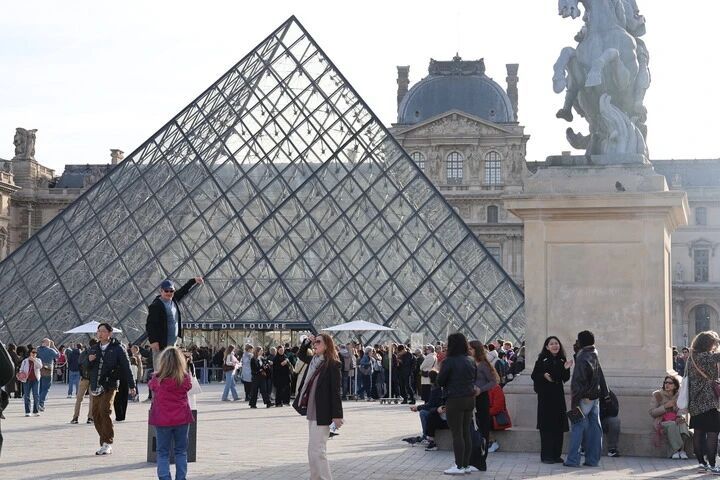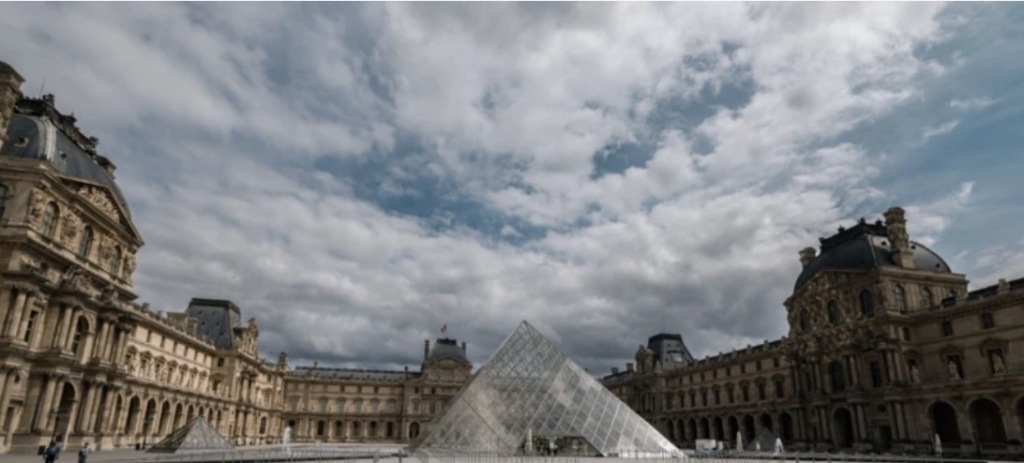
A series of classic masterpieces in the history of Western art, including Millet's "The Gleaners", Van Gogh's "Bedroom in Arles" and "Self-Portrait", have been exhibited on the banks of the Huangpu River for more than four months and are finally leaving Shanghai.
The Shanghai Pudong Art Museum's "Creating Modernity: Art Treasures from the Musee d'Orsay in Paris" and "Times of Yifei: Chen Yifei Retrospective Exhibition" came to a close on the evening of October 26. The Pudong Art Museum will also be temporarily closed until the opening of the "Miracles of Patterns - Louvre Collection Exhibition" in December.
The Paper reports that during the 130-day period of the Orsay exhibition, the Pudong Art Museum welcomed over one million visitors, a 260% increase compared to the same period last year. Looking back at the three Orsay exhibitions held in Shanghai over the past 20 years, they are like three time capsules, preserving the memories of different generations of viewers who share a passion for Impressionism.

At 10 p.m. on October 26th, with an hour left before the closing of the two exhibitions, crowds were still flocking to the paintings by Van Gogh, Gauguin, and other iconic Western artists. Many viewers raised their cameras, intently capturing details of the paintings, while others posed for photos alongside them to preserve their memories.
In the exhibition hall, a visitor stood quietly, taking notes in a sketchbook. A reporter from The Paper approached her to chat. Peng, an artist from Shenzhen, was visiting friends in Shanghai and had made the Orsay exhibition a must-see on her itinerary. "I've been to the Paris Orsay before, and this time, the Orsay collection is in China, so there's so much to see. I finally got to see it on the last day." Her sketchbook contained her own interpretations of the artwork. "Courbet originally drew a woman on the right side of 'The Wounded Man,' but he later painted it over. I tried to 'complete' the work."

After 10 pm on October 26, the audience who caught the "last train" gathered in front of Van Gogh's "Self-Portrait"

A sketchbook by Ms. Peng from Shenzhen, recording her exhibition works.
Ms. Peng, from Shenzhen, represents a segment of the exhibition's audience: professionals traveling across cities to see the exhibition. However, the d'Orsay's audience is by no means limited to professionals; visitors of all ages and backgrounds flock to see it. This makes the d'Orsay a hot topic in the city from its opening, and long queues are the norm on weekends.
During the last two months of the exhibition, the museum extended its opening hours to 11 PM. The night before Manet's "Emile Zola," and seven other works, left Shanghai, the museum even extended its closing hours to midnight.

Exhibition hall on the evening of October 26
On the final night of the exhibition, there were no more tickets available for sale, but if you reserved your ticket in advance, the staff would be accommodating even after the last entry time. Although the exhibition hall was constantly crowded, the paintings were arranged with ample space between them, so even star exhibits like "The Gleaners" and "Van Gogh's Bedroom" could be seen in detail with just a short wait.

On the evening of October 26, the audience of "The Gleaners".
"I'd read about The Gleaners before, but this was my first time seeing the original. While the details, like the hands, aren't as refined as in previous classical works, the work nonetheless reveals the divinity of ordinary life," said Ms. Wang, who works in Shanghai and visited the exhibition with a friend at the last minute. Her friend had to leave first to catch a train, so she returned to revisit the exhibition alone.
Most of the audience at this moment were not as relaxed as Ms. Wang. Most of them were unwilling to take time out for interviews, because in her limited final time, she simply wanted to immerse herself in her paintings.

From opening to closing, Van Gogh's Bedroom was packed with visitors.
The Orsay Exhibition: Witnessing the Great Changes of a City
When it comes to encountering classic Western art masterpieces in Shanghai, the most unforgettable thing for those born around the 1950s was the "French 19th-Century Rural Landscape Painting" in the late 1970s. The works on display at that time included Gauguin's "Haystacks", Renoir's "Champlain on the River", and Millet's "Shepherdess".
At the time, this was a major event in the Chinese art world, marking the first large-scale exhibition of classic Western paintings in mainland China since the founding of the People's Republic of China. For artists, who were learning to paint by looking at mostly fuzzy prints, the shock was unprecedented and had a profound impact.
In 1982, the "250th Anniversary of French Painting Exhibition" once again caused a sensation in Beijing and Shanghai. At that time, works from Poussin to Courbet collected by the Louvre and the Palace of Versailles were exhibited. The two direct encounters with Western original works not only changed China's previous standards for judging Western art history, but also influenced a generation of artists, including Chen Yifei.

Exhibition site of "Times Yifei: Chen Yifei Retrospective Exhibition"
That year, the organizers selected more than a dozen young oil painters, including Chen Yifei and Wei Jingshan, to create large-scale reproductions of their paintings after the museum closed, a task they benefited greatly from. Half a century later, the Orsay collection's oil paintings, alongside Chen Yifei's, sparked another discussion about how the European classical tradition was interpreted by Chinese painters at the turn of the century.

At the end of 2004, the "French Impressionist Painting Treasures Exhibition" was held at the Shanghai Art Museum, attracting a large number of visitors.
The Musee d'Orsay's collections actually came to Shanghai in 2004. That year, the "Exhibition of Treasures of French Impressionist Paintings" was held at the Shanghai Art Museum at 325 Nanjing West Road. The 51 top Impressionist works from the Musee d'Orsay in France once again fascinated Shanghai audiences. The exhibition, which had queues all night long, was the largest exhibition of Western paintings held in China at that time in terms of scale and artistic level.

Degas's "Dancing Lesson" is currently on display at the 2004 "French Impressionist Painting Treasures Exhibition".
In 2012, the Shanghai Art Museum relocated to the China Pavilion at the World Expo. Its inaugural exhibition, "Miller, Courbet, and French Naturalism," once again featured works from the Orsay Museum, further demonstrating Shanghai audiences' fondness for French art. That year, Millet's The Gleaners also made its debut in China.

On November 12, 2012, the exhibition "Miller, Courbet and French Naturalism: Treasures from the Musee d'Orsay in Paris" was launched at the China Art Museum.
Thirteen years later, Millet's The Gleaners returned to the Huangpu River, alongside works by such greats of Western art history as Courbet, Monet, Manet, Degas, Renoir, Cézanne, Van Gogh, Gauguin, and Seurat. Together, they showcased the evolution of Western painting from classical to modern times for Chinese audiences. This was the largest exhibition ever held by the Musée d'Orsay in China.

The exhibition entrance features two works inspired by the Old World.

The last work in the exhibition is Bonnard's "Toilet Paper," 1914.
Coincidentally, the curator of this exhibition, Stéphane Guegan, was also the curator of "Miller, Courbet, and French Naturalism." He recalls walking through the exhibition hall 13 years ago during a public viewing and truly feeling the passion these works inspired. He was most deeply influenced by his encounters with older Chinese artists, who shared a deep admiration for Millet, Bastien-Lepage, and others.

In May 2025, curator Stephane Gueguin (first from left) introduced Bonnard's work "Joy" at the exhibition site
At the Pudong Art Museum in 2025, Li Qian, a professor at the Shanghai Theatre Academy and a gold medalist at the National Art Exhibition, was still overcome with emotion when he stood before Lepage's "Hay." He told The Paper that this was the third time the work had come to Shanghai, and the third time he had stood before the original (twice in Shanghai and once in Paris), and each viewing brought him nourishment.

The exhibition "Creating Modernity: Art Treasures from the Musee d'Orsay in Paris" features Le Page's "Hay" on the right.
At the Orsay exhibition, I often encounter contemporary artists. Although many of them no longer paint on easels, I still believe that these masterpieces from the Orsay exhibition are not to be missed. "The exploration of light and shadow, composition and color is an experience that is difficult to replace with books or digital media."
Thirteen years later, Shanghai has clearly undergone tremendous changes. Its art museum system has become more diverse, professional, and international. The audience is no longer limited to professionals and art enthusiasts. The Paper, at the scene, was particularly impressed by the general public's familiarity with and passion for art history.
As the city now hosts more and more exhibitions, introduces more and more projects, and has more international partners, there are many visitors who "go to exhibitions across cities", and the audiences are more "picky" than before.
A continuation of modernity and cultural exchange
Mr. Ma, who works in the IT industry, visited the Musée d'Orsay in Paris during the National Day holiday. He saw many of the works there, having previously visited Shanghai. He rushed back to Shanghai on his last day to see some of the works he had missed in Paris. However, he regretted that seven of the works had been removed early and were destined for the National Museum of Western Art in Tokyo.

On the evening of October 12, 2025, the audience was about to leave Latour's "The Diebolds".
It's reported that these seven works, included in the "Impressionist Collection of the Musée d'Orsay: Interior Stories," include at least two: Monet's "Madame Louis-Joachim Gaudíbert" and Latour's "The Dubourgs." These two were not originally included in the Pudong Art Museum's exhibition. Sylvain Amick, then president of the Musée d'Orsay, strongly suggested their inclusion for the sake of a more complete exhibition. He believed that the inclusion of this early Monet work would help clarify the evolution of his artistic style. Sylvain Amick's untimely passing is deeply regrettable. During his visit to Shanghai in June, he felt the city's profound understanding and appreciation of art, as well as the importance of art in contemporary society.

On June 18, at the exhibition site of Amick (second from left), Monet's "The Wife of Louis-Joachim Gaudbert" was on the first left.

The exhibition board descriptions of the 7 exhibits after they were removed.
The exhibition at the National Museum of Western Art, Tokyo, opened on October 25th. Seven works previously exhibited in Pudong were re-presented in Tokyo in various arrangements. The near-synchronization of the Shanghai and Tokyo exhibitions reflects, in some ways, the city's evolving position in the global art landscape. In fact, the Tokyo exhibition also includes works from Japanese collections. As the "source of modern Chinese art," Shanghai might also consider incorporating its own artistic traditions into the exhibition.

Exhibition poster for "Impressionism from the Musee d'Orsay: Interior Stories," at the National Museum of Western Art, Tokyo.
Looking back at the "Western Painting Movement" of a century ago, building on the "Art Revolution" proposed by Kang Youwei, Chen Duxiu, and others, the earliest artists studying abroad believed that drawing on Western realistic traditions was a way to compensate for the shortcomings of literati painting in form and technique, thereby promoting the modernization of Chinese culture and technology. However, they were unaware that Western artists at the time had already begun to question traditional realism and were instead seeking inspiration from the East, drawing on the spirit and freehand traditions of literati painting.
This intertwining of histories is particularly worthy of reflection in today's exhibition dialogue. In the Orsay exhibition, from Manet's vision of Eastern art to the Nabis' leading figures, Bonnard and Vuillard, there was a mastery of both classical culture and Eastern aesthetics. From Ukiyo-e to the freehand spirit of Chinese painting, to the light, shadow, and structure of the Northern School of Europe, these intertwined artistic traditions are the ongoing dialogue between Shanghai and Tokyo today, as they jointly exhibit masterpieces from the Orsay. This dialogue explores modernity and cultural exchange.

Édouard Manet, Woman with a Fan, 1873-1874, oil on canvas
More broadly, during the exhibition, over 200 cultural and creative derivatives were developed, and approximately 40 supporting activities, including public education, performances, and markets, were held. The Pudong Art Museum partnered with Qiantan Park Lane to create the "Grand Artist Festival" market, and partnered with Ctrip to launch the "Shanghai Star Pudong Art Museum Olympiad" boat tour, bringing art beyond the museum and into the streets and everyday life. The Pudong Art Museum, along with the Oriental Pearl Tower and the Oriental Riverside Hotel, launched ticketing partnerships for the Olympiad, offering tours and accommodations. They also offered dining and parking discounts with surrounding businesses, connecting the consumer community along the Lujiazui Riverside Corridor and fostering an organic interaction between art and urban life.

Pudong Art Museum and Qiantan Park Lane jointly create the "Grand Artist Festival" market

Exhibition Cultural and Creative
"Creating Modernity: Art Treasures from the Musee d'Orsay in Paris" and "Times Yifei: A Chen Yifei Retrospective" allowed Shanghai audiences to directly encounter numerous treasures from Western art history, experiencing the intersection of history and the contemporary, and highlighting the city's growing cultural engagement and international collaboration. With the upcoming Shanghai Art Season and Shanghai Art Fair Week, Shanghai is gearing up for the next round of international art dialogue, further expanding artistic exchanges and urban cultural experiences with a global perspective.


